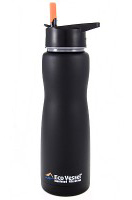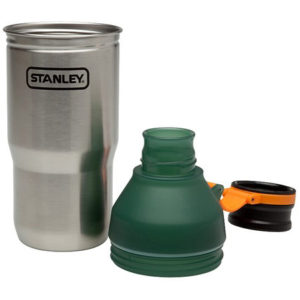
Because a bug out bag (BOB) is a 72-hour kit, I suggest you pack a minimum of approximately three liters of fresh drinking water per person.
Even with three full liters, there is little margin for error. Certain weather climates increase the amount of water a person needs to survive. You’ll consume more water if your journey is especially rigorous.
Personal hygiene can also tap into your water supply. The water you carry will constitute a large percentage of the overall weight of your bug out bag.
The good news is that the weight will decrease as you hydrate. In a survival situation, a good emergency water storage container can be invaluable.
3 Types of Emergency Water Storage Containers

Divide your supply up among three different emergency water storage containers. I never suggest carrying all three liters in a single emergency water storage container for two reasons:
1. If you have only one emergency water storage container and you lose or break it, you no longer have a viable way to carry and store water. This can present a very serious threat. Natural water-tight containers are not easy to find or make.
2. It’s easier to distribute weight in your bug out bag when it is divided into two or three smaller emergency water storage container. I suggest dividing your water into the following three different containers.
Emergency Water Storage Container #1: 32-oz. Wide-Mouth Nalgene Hard Bottle
Nalgene bottles are durable and crush resistant. Although “Nalgene” is actually a brand, the word has been adopted generically to describe any hardened plastic bottle (sort of like Kleenex and Xerox).
I have used Nalgenes in countless adventures and never has one failed me. I’ve even dropped one from 50 feet while rock climbing and it came out unscathed. Get the wide mouth version. They are easier to fill and they can double as a dish to eat from if necessary.
On their sides are printed measuring units, which is convenient for preparing dehydrated meals. I’ve also never had one leak. You can trust it in your pack.
Emergency Water Storage Container #2: Metal Water Bottle

These canteens weigh about the same as any Nalgene bottle. Rather than just carrying two Nalgene bottles, I suggest opting for a metal alternative.
A metal emergency water storage container can be used to boil and purify drinking water collected “in the field” should your immediate supply run dry.
Emergency Water Storage Container #3: Collapsible Soft Bottle

Packing a collapsible, soft emergency water storage container allows you to reduce bulk as water is used. Consume the contents of this emergency water storage container first.
When empty, they take up virtually no space and weigh just a few ounces.
They are not as durable, but with the two other containers listed above, you can afford to sacrifice durability for weight and space with this option.

![Best Concealed Carry Guns In 2025 [Field Tested] Wilson Combat EDC X9S 1](https://gundigest.com/wp-content/uploads/Wilson-Combat-EDC-X9S-1-324x160.jpg)


![Best 9mm Carbine: Affordable PCCs [Tested] Ruger Carbine Shooting](https://gundigest.com/wp-content/uploads/Ruger-Carbine-Shooting-100x70.jpg)

